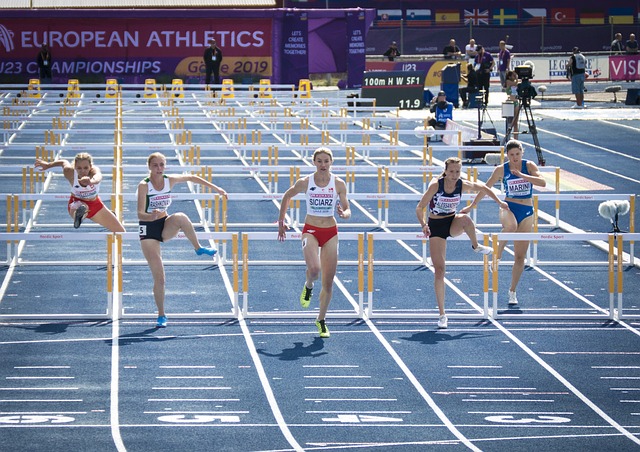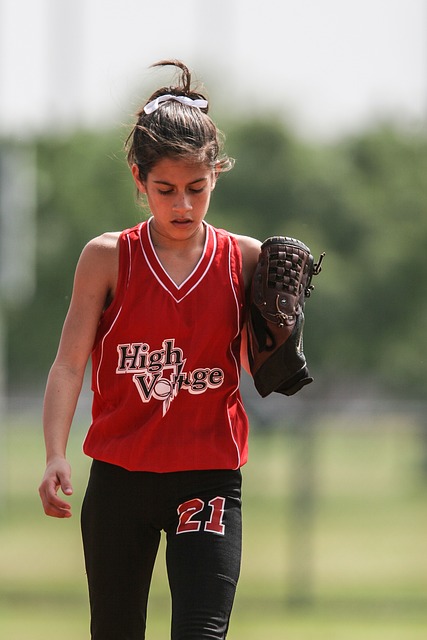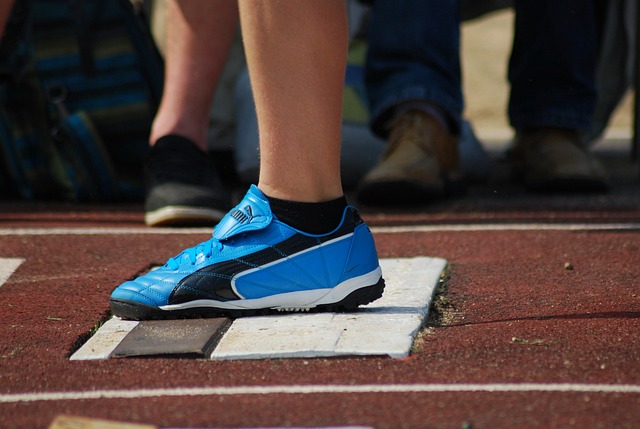Athletic recovery has been revolutionized through the integration of advanced regenerative medicine techniques within sports regeneration and performance therapy. This holistic approach to muscle repair and injury recovery, exemplified by Regenerative Sports Medicine, utilizes cutting-edge treatments like PRP injections and stem cell therapy alongside traditional therapies to enhance athletic performance and facilitate swift, effective recovery. The focus is on personalized care that targets the unique physiological needs of each athlete, minimizing injury impact and downtime while optimizing body regeneration capabilities. These innovations not only aim to return athletes to their peak performance but also strive to improve upon it, ensuring a robust framework for resilience and sustained athletic longevity. This evolution in sports medicine combines biomechanical evaluations with the latest technologies to address both immediate recovery and long-term athletic enhancement, marking a significant advancement in the field of athletic recovery.
When athletes suffer sports injuries, the path to recovery is pivotal not just for their performance but for their overall well-being. This article delves into the latest advancements in athletic recovery, emphasizing muscle repair and injury rehabilitation through expert recovery programs. We explore the transformative impact of performance therapy on sports regeneration and body regeneration, shedding light on regenerative sports medicine as a comprehensive approach to recover with precision. From cutting-edge techniques in muscle repair to the synergy of targeted therapies, readers will gain insights into how athletes can elevate their game post-injury. Join us as we navigate the landscape of recovery, where innovation meets resilience.
- Unveiling the Art of Athletic Recovery: Strategies for Optimal Muscle Repair and Injury Rehabilitation
- The Role of Performance Therapy in Enhancing Sports Regeneration and Body Regeneration
- Delving into Regenerative Sports Medicine: A Comprehensive Approach to Injury Recovery and Muscle Renewal
- Cutting-Edge Techniques in Muscle Repair: The Future of Athletic Recovery Programs
- Elevating Performance Through Targeted Therapies: The Synergy of Sports Regeneration and Recovery Innovations
Unveiling the Art of Athletic Recovery: Strategies for Optimal Muscle Repair and Injury Rehabilitation

Athletic recovery is a multifaceted process that encompasses muscle repair and injury rehabilitation to restore an athlete’s performance capabilities. At the heart of effective athletic recovery lies a comprehensive approach that integrates advanced sports regeneration techniques with personalized performance therapy. These strategies are designed to stimulate the body’s natural regenerative processes, facilitating optimal muscle repair. Physical therapists employ a variety of modalities, including targeted exercises and cutting-edge biomechanical interventions, to enhance tissue healing while minimizing recovery time. The goal is to not only return the athlete to their pre-injury state but to also improve upon it, thereby elevating overall performance levels post-rehabilitation.
In the realm of injury recovery, regenerative sports medicine emerges as a pioneering field that leverages the latest scientific advancements. It involves the use of platelet-rich plasma (PRP) injections, stem cell therapy, and other innovative treatments to accelerate body regeneration. These therapies are tailored to the individual’s unique physiological needs, ensuring a personalized healing trajectory that optimizes muscle repair and enhances recovery from sports injuries. The integration of these technologies with traditional performance therapy modalities creates a robust framework for athletes to recover from injuries more efficiently, ultimately leading to improved athletic performance and a reduced likelihood of future injuries.
The Role of Performance Therapy in Enhancing Sports Regeneration and Body Regeneration

In the realm of athletic recovery, performance therapy plays a pivotal role in facilitating sports regeneration and muscle repair. This specialized branch of regenerative sports medicine is dedicated to enhancing the body’s natural healing processes, aiming to restore athletes to their peak performance levels after an injury. It encompasses a variety of techniques and treatments, from manual therapies like massage and physical manipulation to advanced modalities such as platelet-rich plasma injections and stem cell therapy. These interventions are designed to accelerate the recovery process, reduce inflammation, and stimulate tissue repair, enabling athletes to return to their sport with improved function and reduced risk of re-injury.
The integration of performance therapy within injury recovery protocols is not only about healing existing injuries but also about optimizing overall body regeneration to prevent future sports-related injuries. By leveraging cutting-edge technologies and a deep understanding of physiological mechanisms, performance therapists can tailor recovery programs to address the specific needs of each athlete. This personalized approach ensures that muscle repair is both efficient and effective, leading to enhanced sports regeneration and a stronger, more resilient body. The goal is to create a comprehensive support system that sustains an athlete’s performance longevity, allowing them to maintain high levels of athletic activity safely and effectively.
Delving into Regenerative Sports Medicine: A Comprehensive Approach to Injury Recovery and Muscle Renewal

Athletes facing sports injuries often seek expedited and effective recovery methods to maintain their performance levels and prevent long-term complications. Regenerative Sports Medicine stands at the forefront of this need, integrating advanced techniques that harness the body’s innate capacity for repair and renewal. This field utilizes cutting-edge therapies such as platelet-rich plasma injections, stem cell therapy, and targeted physiotherapy to stimulate muscle repair and enhance injury recovery. The goal is to restore athletic function with minimal downtime, ensuring a swift return to peak performance.
In the realm of performance therapy, the emphasis is on holistic healing that addresses not just the site of injury but also the underlying mechanisms contributing to the damage. Muscle repair protocols within Regenerative Sports Medicine are tailored to each athlete’s unique physiology and injury, leveraging biomechanical assessments alongside regenerative treatments to optimize recovery and prevent future injuries. By fostering an environment conducive to body regeneration, athletes can not only recover from their current setbacks but also build a foundation for stronger, more resilient performance in the future.
Cutting-Edge Techniques in Muscle Repair: The Future of Athletic Recovery Programs

In the realm of athletic recovery, sports regeneration techniques are rapidly advancing, offering athletes more effective and efficient ways to heal from injuries. Muscle repair, once a slow and arduous process, is now being accelerated through innovative therapies in performance therapy. Regenerative sports medicine harnesses the body’s natural capacity for regeneration with treatments such as platelet-rich plasma (PRP) injections and stem cell therapy, which are reshaping how injuries are addressed and recovery times shortened. These cutting-edge interventions not only facilitate muscle repair but also aim to enhance overall injury recovery by promoting tissue healing at a cellular level, ensuring athletes can return to their peak performance more swiftly and safely.
The integration of biomechanics, advanced imaging, and personalized rehabilitation protocols in performance therapy is revolutionizing the way injuries are treated. These targeted interventions, combined with rigorous post-injury training programs, are tailored to each athlete’s unique physiology, ensuring a more effective muscle repair process. Body regeneration technologies are also being explored, with research into how bioengineering can support or even replace damaged tissues. This burgeoning field promises to further the boundaries of athletic recovery, making injury rehabilitation not just about returning to the sport but enhancing performance beyond pre-injury levels. The future of athletic recovery programs lies in these forward-thinking approaches, ensuring that athletes have access to the most advanced and effective methods for muscle repair and injury recovery available.
Elevating Performance Through Targeted Therapies: The Synergy of Sports Regeneration and Recovery Innovations

In the realm of sports performance, the integration of athletic recovery protocols with advanced regenerative medicine techniques is revolutionizing injury recovery and muscle repair mechanisms. Sports regeneration programs are now leveraging cutting-edge therapies to not only expedite the healing process but also to enhance overall athletic performance. These targeted interventions, often encompassing everything from platelet-rich plasma injections to stem cell therapy, are designed to promote body regeneration, ensuring a faster return to peak physical condition. The synergy between these innovative recovery solutions and traditional performance therapy modalities creates a comprehensive approach that addresses both the immediate needs of injury recovery and the long-term goals of athletes seeking to elevate their performance levels.
The field of regenerative sports medicine is at the forefront of this evolution, offering personalized treatment plans that cater to the unique requirements of each athlete’s body. These tailored approaches facilitate muscle repair by focusing on the underlying biological processes that govern tissue restoration. Through a combination of advanced imaging technologies and biomechanical assessments, healthcare providers can pinpoint the exact nature of an injury and implement the most effective regenerative strategies to support recovery. This holistic method not only accelerates the healing process but also minimizes the risk of reinjury, thereby ensuring athletes can perform at their highest potential. As a result, the integration of sports regeneration with performance therapy stands as a testament to the ongoing advancements in the medical community’s ability to support and enhance athletic recovery and overall health.
In conclusion, the landscape of sports injury recovery is rapidly evolving, with athletic recovery and muscle repair at its forefront. The integration of performance therapy and regenerative sports medicine represents a paradigm shift in how athletes approach injury and body regeneration. These advanced strategies not only facilitate a return to peak physical form but also pave the way for enhanced overall performance through targeted therapies. As such, athletes and sports professionals must embrace these cutting-edge techniques to stay ahead in their respective fields. The future of athletic recovery programs promises to be robust and responsive to the demands of high-level competition, ensuring that sports regeneration remains at the pinnacle of health and performance innovation.
